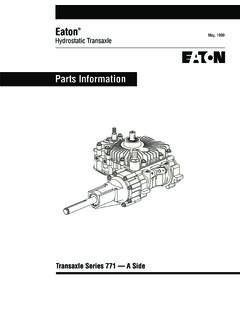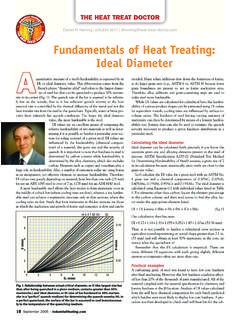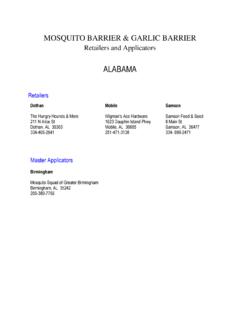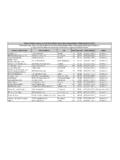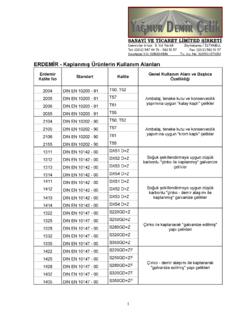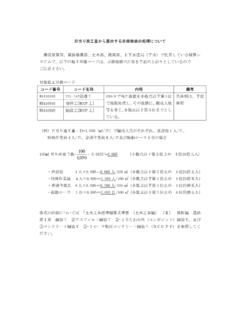Transcription of A Bosnian Commentator on the Fusus al-hikam
1 A Bosnian Commentator on the Fusus al-hikamRe id Hafizovi cIntroduCtIonMuhyiddin Ibn Arabi s Fusus al-hikam is the work of a Muslim Sufi philosopher, theosopher and highly sophisticated hieratic, and a native of that irreplaceable Muslim kingdom in southern Europe known as Andalusia, the loss of which is still mourned. not only is this work an inexhaustible locus of inspiration for the central concerns of Sufi literary works and the entire eso-teric tradition of Islam, but it also symbolizes the most elabo-rate, and still unsurpassed, metaphysics of the imagination ever developed.
2 It is based on the gnosis and direct spiritual experi-ence of mubashshira or the imaginal vision, accompanied by a voice from the world of malakut, the world of the living creative imagination or mundus imaginalis ( alam al-amthal). Ibn Arabi himself, al-Shaykh al-Akbar (Doctor Maximus), is explicit in say-ing that he received the substance of the book from the Prophet of Islam, whom he saw in a vision of direct spiritual witness-ing (al-shuhud) among other messengers of the Word of God in damascus in the latter part of the month of Muharram ah 627, where they had come together as a true communia spiritualis.
3 As Ibn Arabi himself says, he wrote down only what the Prophet of Islam desired him to; he did not describe in minute detail all the spiritual sapience (adhwaq) and testimony (shuhud) he expe-rienced during this extraordinary spiritual audience .the fact that the Fusus al-hikam has been the subject of com-mentary for more than eight centuries is sufficient evidence of its significance and almost inexhaustible content. It would be hard to name all those who have sought to interpret it, and no less difficult to list all the languages into which the book has been translated and in which lengthy and painstaking commentaries on and analyses of the work have been written.
4 Journal of the Muhyiddin Ibn 'Arabi Society, Vol. 47, 201088Re id Hafizovi cthis is testimony not only to the profundity and extreme spir-itual complexity of the text, but also suggests that the Fusus al-hikam surely came into being under the influence of extraor-dinary spiritual inspiration and illumination, ranging from ilham (inspiration), kashf (revelation), dhawq (intuitive cogni-tion, taste), fayd (effusion, emanation of divine light), tajalliyat (self-disclosure, divine theophanies), and al-waridat (spiritual inspiration) to ilqa (projection of divine light to illuminate the sufi heart)1 and mushahada (contemplative witnessing through the eye of the heart).
5 There is a perceptible effort on the part of Western oriental and Islamic studies, focusing in particular on the commentaries and analysis of Sufi literary works and their authors, to understand in detail, in a manner more applicable to the Western mindset, the forms of inspiration that led to the composition of the Fusus al-hikam . It is not unusual to find in such studies examples clearly revealing that the kinds of inspi-ration referred to above by their Arabic terms are expressed in the West by metaphorical titles such as Gabriel s Wing, sophia aeterna, L Ange empourpr , Madonna intelligenza, and so CoMMEntAtorSWriting in different eras and from various parts of the world.
6 The scholars who have written commentaries on Ibn Arabi s Fusus have not solely confined themselves to the text in isolation from the historical and spiritual context within which it came into being, but have been of one mind in placing it into the rel-evant historical, interpretative and spiritual context within the history of Islamic philosophy. Putting the Fusus into context, the first paradigm for this kind of approach was proposed by Sadruddin al-Qunawi ( ), who was also the first true 1. Ilqa rabbani projection or cause of the Lord s revelation into the heart of the sufi; see, for example, Ibn Arabi s Futuhat, Vol.
7 III, p. 457 of Osman Yahya s edition (Cairo, 1970).2. Henry Corbin, L Imagination creatrice dans le soufisme d Ibn Arabi (Paris, 1958); Islam u Iranu, III (Sarajevo, 2000); Annemarie Schimmel, Gabriel s Wing (Lahore, 2000).89A Bosnian Commentator on the Fusus al-hikaminterpreter of this work by Ibn Arabi, in his famous work, K. With an extraordinary understanding of peripatetic philosophy on the one hand and traditional Islamic scholarship on the other, Sadruddin s approach to the work is all the more significant and authoritative in the light of his intimacy with Ibn Arabi, for the Persian al-Qunawi was not only Ibn Arabi s stepson, but also his spiritual heir in the real, literal meaning of the word.
8 Because of this intimate connection, al-Qunawi was to become the spiritual guide and director of many students, and others who joined the path of Sufism, who came to Konya to hear him first comprehensive commentary of Ibn Arabi s Fusus al-hikam was compiled by Mu ayyidduddin al-Jandi ( ),4 a pupil of Sadruddin Qunawi and one of the second generation of interpreters of this work by Ibn Arabi. this was followed by the commentary written by his pupil Abd al-razzaq al-Kashani ( ),5 and the two-volume commentary by al-Kasha-ni s pupil dawud al-Qaysari ( ).
9 6 Sadruddin al-Quna-wi s style is clearly recognizable in each of these commentaries: indeed, in that of dawud al-Qaysari not only the master s style but also the basic conception was borrowed from his works. Also in this list of well-known interpreters of Ibn Arabi s Fusus , one should not overlook the famous Iranian philosopher, Sufi and hieratic Haydar Amuli ( in Amul), who wrote an important commentary on the Fusus entitled Nass al-nusus (the text of texts).7 Haydar Amuli s work differs from others in that he deals with the Fusus in the light of his great Tafsir, bearing in mind at all times the relationships between both the Qur an and the Prophet of Islam on the one hand, and between the 3.
10 Sadruddin al-Qunawi, Kitab al-fukuk, ms no. 4858, Yusuf Agha Library, Mu ayyid al-Din Jandi, Nafhat al-ruh wa tuhfat al-futuh, ed. Mayil Harawi (Tehran, 1983).5. Abd al-Razzaq al-Kashani, Sharh Fusus al-hikam (Cairo, 1966).6. Sharaf al-Din Dawud al-Qaysari, Sharh Fusus al-hikam (Tehran, 1981 82).7. Haydar Amuli, Nass al-nusus (Tehran/Paris, 1988).90Re id Hafizovi cProphet of Islam and Ibn Arabi on the other. For him, it would have been almost inconceivable to compile a comprehensive commentary on the Fusus without constantly drawing analo-gies and associating this hermeneutic act with the hermeneutic approach to his great commentary on the Qur an.
